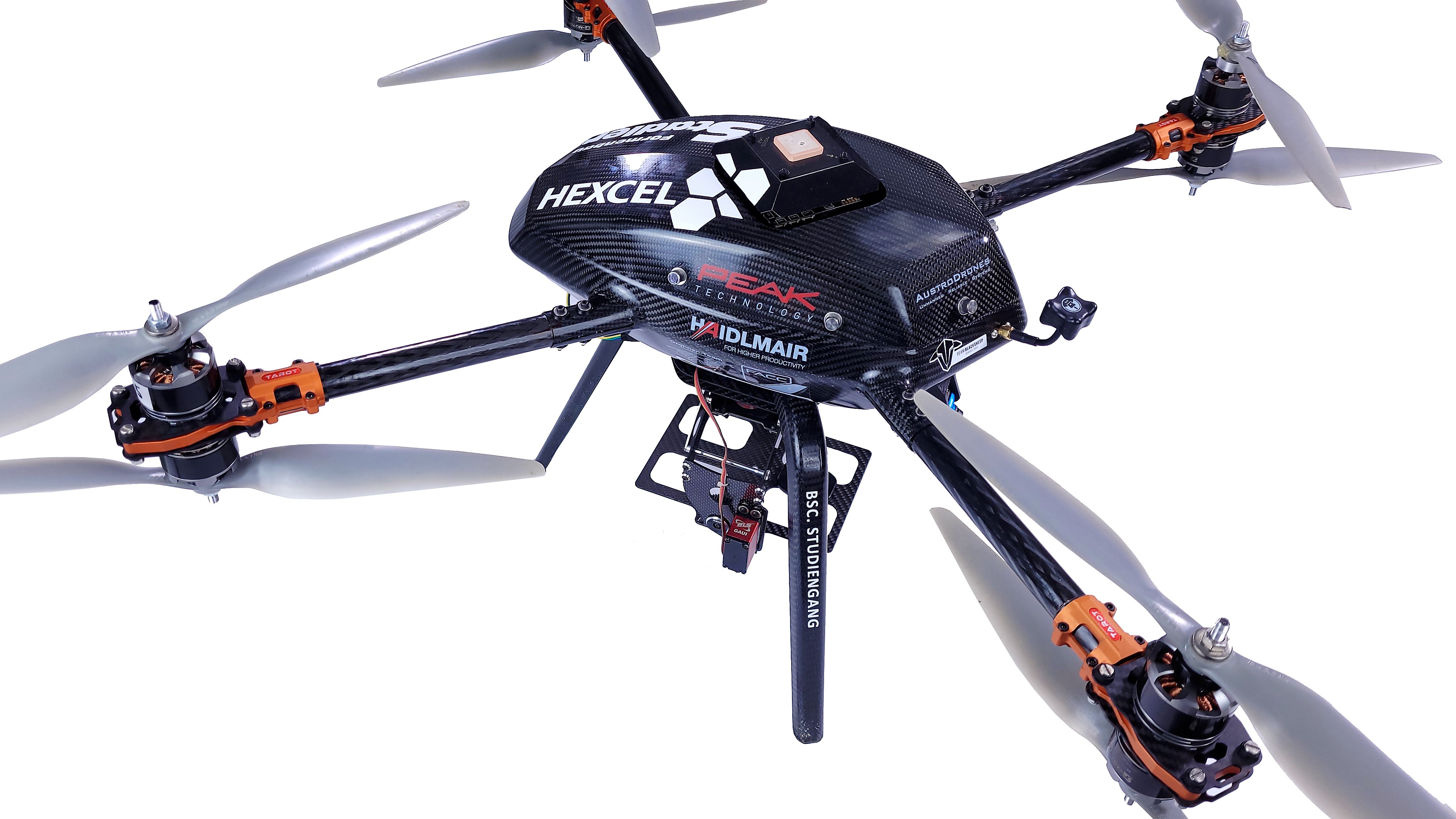
Hexcel says that a lightweight camera drone developed using the company’s carbon fiber prepregs has completed a successful maiden flight.
The composite drone was developed by a team of students from the University of Applied Sciences in Wels, Austria.
According to the company, using Hexcel materials for the drone’s landing gear and fuselage and improving the composite engineering enabled the team to reduce the composite structural mass by an 42% compared to similar drones.
The 32g landing gear was laid up and cured in the press, whereas the fuselage was autoclave cured by the student team using Hexcel HexPly M901 and HexPly M78.1 prepreg resin systems with a combination of woven and unidirectional carbon fiber reinforcements.
‘The massive weight saving achieved with their updated version of the camera drone is a fantastic achievement by the student team,’ said Michael Rabl, dean of the university. ‘The joint study not only illustrates the wide range of complex and innovative composite techniques present in the drone sector but also presents the opportunities that exist for further development in the wider urban air mobility (UAM) and aerospace composites markets.’
This story uses material from Hexcel, with editorial changes made by Materials Today. The views expressed in this article do not necessarily represent those of Elsevier.




